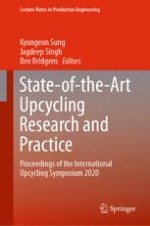This book presents the proceedings of the first International Upcycling Symposium 2020, held on 4th September 2020 at De Montfort University (DMU) in Leicester, UK (online), as a joint effort between DMU, Lund University, Nottingham Trent University and Newcastle University. This book presents state of the art of research and practice in “upcycling” at the international level.
The subject of this book, upcycling, is a term to describe the processes of creating or modifying a product from used or waste materials, components and products, which is of equal or higher quality or value than the compositional elements. This book describes new theories, approaches and scientific research findings related to upcycling and presents examples of upcycling practice, across multiple sectors, scales and contexts. Bringing together research from over 35 multidisciplinary experts, the book discusses state-of-the-art knowledge and practices on upcycling in different geographical, economic, socio-cultural and technological contexts at an international level.
Readers will gain fundamental understanding of upcycling with its varied definitions and forms across sectors and scales, and to be informed of the latest upcycling research and practices including valuable ideas, theories, projects, experiences and insights by global experts.
